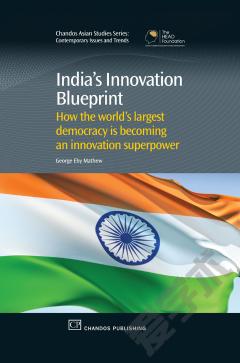India's Innovation Blueprint —— How the Largest Democracy is Becoming an innovation Super Power
----- 印度是如何借助全球化成为创新超级大国的
In 2010, India celebrated its 60th anniversary as an independent sovereign republic. India is the fourth largest economy by gross domestic product. Economically, it is building itself as a formidable force and global influence. At the same time India has fundamental challenges: its inequities are visible; its young population tread a thin line between opportunity and pitfall; its infrastructure has gaping holes; and it a slow chaotic democracy. This book establishes that in spite of these challenges, a new India is emerging out of the old, colliding more often than collaborating with the old India. Much of the new India is built on the economic momentum established 20 years ago and built by private entrepreneurs. The new economic climate, together with talent and entrepreneurship, is also making India a net supplier of innovation. Going by current trends, India will become an innovation super power by 2035. This book will establish that India is not just leveraging innovation for global competitiveness alone, but is also leveraging innovation as the specific instrument for inclusive growth. This book identifies gaps in the current innovation ecosystem and recommends a portfolio approach and calls for a National Innovation System (NIS) as a blueprint to fix the gaps. It suggests that for India to succeed in identifying, funding and sustaining a balanced innovation portfolio, India will also have to succeed in eliminating poverty, increase its rural GDP manifold, and provide employment, education and health for all its citizens.
{{comment.content}}








 京公网安备 11010802027623号
京公网安备 11010802027623号